Impact of Odor Nuisance on Preferred Place of Residence
Abstract
1. Introduction
2. Materials and Methods
2.1. Framework of Studies
2.2. Methodological Assumptions
2.3. Data Analysis Methods
- |r| ≥ 0.9—very strong correlation,
- 0.7 ≤ |r| < 0.9—strong correlation,
- 0.5 ≤ |r| < 0.7—medium strong correlation,
- 0.3 ≤ |r| < 0.5—weak correlation,
- |r| < 0.3—very weak correlation (negligible).
2.4. Sample Characteristics
3. Research Results
3.1. In General
3.1.1. Age of Respondents and Feeling Sorry for the Necessity to Change Their Place of Residence
3.1.2. Over 36 Years of Age
3.2. Sex and Smell Related to the Regret about Leaving the Place of Residence
3.3. Influence of Fragrances on Attitudes of People Up to 25 Years of Age
3.4. Residing in Kraków for More than 25 Years
3.5. The Period of Residence and the Regret Caused by the Necessity to Leave the Place of Residence Due to Smells
4. Conclusions
Author Contributions
Funding
Conflicts of Interest
References
- Hoffmann, B. Scent in science and culture. Hist. Hum. Sci. 2013, 26, 31–47. [Google Scholar] [CrossRef]
- Marsousin, N.; Khodadadi, R. The Role of Social Capitals in Urban Development with the Emphasis on Life Quality (Case Study: Zanjan City); University of Isfahan: Isfahan, Iran, 2015. [Google Scholar]
- Okulicz-Kozaryn, A.; Valente, R.R. Livability and subjective well-being across European cities. Appl. Res. Qual. Life 2018, 14, 197–220. [Google Scholar] [CrossRef]
- Buettner, A. (Ed.) Springer Handbook of Odour; Springer: Berlin, Germany, 2017. [Google Scholar]
- Croy, I.; Nordin, S.; Hummel, T. Olfactory disorders and quality of life—An updated review. Chem. Senses 2014, 39, 185–194. [Google Scholar] [CrossRef] [PubMed]
- Zucco, G.M.; Schaal, B.; Olsson, M.; Croy, I. Applied olfactory cognition. Front. Psychol. 2014, 5, 873. [Google Scholar] [CrossRef] [PubMed]
- Greenberg, M.I.; Curtis, J.A.; Vearrier, D. The perception of odor is not a surrogate marker for chemical exposure: A review of factors influencing human odor perception. Clin. Toxicol. 2013, 51, 70–76. [Google Scholar] [CrossRef] [PubMed]
- Alobid, I.; Nogué, S.; Izquierdo-Dominguez, A.; Centellas, S.; Bernal-Sprekelsen, M.; Mullol, J. Multiple chemical sensitivity worsens quality of life and cognitive and sensorial features of sense of smell. Eur. Arch. Oto-Rhino-Laryngol. 2014, 271, 3203–3208. [Google Scholar] [CrossRef]
- De Wijk, R.A.; Cain, W.S. Short note odor identification by name and by edibility: Life-span development and safety. Hum. Factors J. Hum. Factors Erg. Soc. 1994, 36, 182–187. [Google Scholar] [CrossRef]
- Călămar, A.-N.; Toth, L.; Găman, G.-A.; Kovacs, M. Analysis of olfactive disconfort, generated by industrial activities neighboring residential areas, affecting the quality of life and health of population. In Proceedings of the International Multidisciplinary Scientific GeoConference SGEM, Albena, Bulgaria, 9–30 July 2018; Volume 18, pp. 35–42. [Google Scholar]
- Eusebio, L.; Derudi, M.; Capelli, L.; Nano, G.; Sironi, S. Assessment of the indoor odour impact in a naturally ventilated room. Sensors 2017, 17, 778. [Google Scholar] [CrossRef]
- Heisterberg, M.V.; Menné, T.; Johansen, J.D. Fragrance allergy and quality of life—A case-control study. Contact Dermat. 2014, 70, 81–89. [Google Scholar] [CrossRef]
- Oiamo, T.H.; Luginaah, I.N.; Baxter, J. Cumulative effects of noise and odour nuisances on environmental and health related quality of life. Soc. Sci. Med. 2015, 146, 191–203. [Google Scholar] [CrossRef]
- Ternesten-Hasséus, E.; Löwhagen, O.; Millqvist, E. Quality of life and capsaicin sensitivity in patients with airway symptoms induced by chemicals and scents: A longitudinal study. Environ. Health Perspect. 2006, 115, 425–429. [Google Scholar] [CrossRef] [PubMed]
- Wolkoff, P. Indoor air humidity, air quality, and health—An overview. Int. J. Hyg. Environ. Health 2018, 221, 376–390. [Google Scholar] [CrossRef] [PubMed]
- Brown, R.E. Mammalian social odors: A critical review. Adv. Study Behav. 1979, 10, 103–162. [Google Scholar]
- Touhara, K. Odor and pheromone molecules, receptors, and behavioral responses. In The Olfactory System; Springer: Tokyo, Japan, 2014; pp. 19–38. [Google Scholar] [CrossRef]
- Weiss, T.; Secundo, L.; Sobel, N. Human olfaction: A typical yet special mammalian olfactory system. In The Olfactory System; Springer: Tokyo, Japan, 2014; pp. 177–202. [Google Scholar] [CrossRef]
- Li, R.Y.M.; Li, H.C.Y. Have housing prices gone with the smelly wind? Big data analysis on landfill in Hong Kong. Sustainability 2018, 10, 341. [Google Scholar] [CrossRef]
- Van Leeuwen, E.; Vreeker, R.; Rodenburg, C.A. A framework for quality of life assessment of urban green areas in Europe: An application to district park reudnitz Leipzig. Int. J. Environ. Technol. Manag. 2006, 6, 111–122. [Google Scholar] [CrossRef]
- Sharida, A.; Hamdan, A.; Al-Hashimi, M. Smart cities: The next urban evolution in delivering a better quality of life. Appl. Hybrid Metaheuristic Algorithms Image Process. 2019, 846, 287–298. [Google Scholar]
- Roukouni, A.; Macharis, C.; Basbas, S.; Stephanis, B.; Mintsis, G. Financing urban transportation infrastructure in a multi-actors environment: The role of value capture. Eur. Transp. Res. Rev. 2018, 10, 14. [Google Scholar] [CrossRef]
- Cilliers, E.J.; Timmermans, W.; Goorbergh, F.V.D.; Slijkhuis, J.S.A. The story behind the place: Creating urban spaces that enhance quality of life. Appl. Res. Qual. Life 2014, 10, 589–598. [Google Scholar] [CrossRef]
- Eltarkawe, M.; Miller, S.L. Industrial odor source identification based on wind direction and social participation. Int. J. Environ. Res. Public Health 2019, 16, 1242. [Google Scholar] [CrossRef]
- Eltarkawe, M.A.; Miller, S.L. The impact of industrial odors on the subjective well-being of communities in Colorado. Int. J. Environ. Res. Public Health 2018, 15, 1091. [Google Scholar] [CrossRef]
- Brattoli, M.; Mazzone, A.; Giua, R.; Assennato, G.; De Gennaro, G. Automated collection of real-time alerts of citizens as a useful tool to continuously monitor malodorous emissions. Int. J. Environ. Res. Public Health 2016, 13, 263. [Google Scholar] [CrossRef] [PubMed]
- Shanahan, L.K.A.; Gottfried, J. Olfactory insights into sleep-dependent learning and memory. Prog. Brain Res. 2014, 208, 309–343. [Google Scholar]
- Cowart, B.J. Relationships between taste and smell across the adult life span. Ann. N. Y. Acad. Sci. 1989, 561, 39–55. [Google Scholar] [CrossRef]
- Mitchell, D.J.; Kahn, B.E.; Knasko, S.C. There’s something in the air: Effects of congruent or incongruent ambient odor on consumer decision making. J. Consum. Res. 1995, 22, 229–238. [Google Scholar] [CrossRef]
- Wu, Y.; Lin, H.; Yin, W.; Shao, S.; Lv, S.; Hu, Y. Water Quality and Microbial Community Changes in an Urban River after Micro-Nano Bubble Technology in Situ Treatment. Water 2019, 11, 66. [Google Scholar] [CrossRef]
- Wypych, G. Front matter. In Handbook of Odors in Plastic Materials, 2nd ed.; Elsevier: Amsterdam, The Netherlands, 2017. [Google Scholar]
- Byliński, H.; Gębicki, J.; Namiesnik, J. Evaluation of health hazard due to emission of volatile organic compounds from various processing units of wastewater treatment plant. Int. J. Environ. Res. Public Health 2019, 16, 1712. [Google Scholar] [CrossRef]
- Nicell, J. Assessment and regulation of odour impacts. Atmos. Environ. 2009, 43, 196–206. [Google Scholar] [CrossRef]
- Blanes-Vidal, V.; Nadimi, E.S.; Ellermann, T.; Andersen, H.V.; Løfstrøm, P. Perceived annoyance from environmental odors and association with atmospheric ammonia levels in non-urban residential communities: A cross-sectional study. Environ. Health 2012, 11, 27. [Google Scholar] [CrossRef]
- Di Gilio, A.; Palmisani, J.; Petraccone, S.; de Gennaro, G.; Fornaro, A. An intergrated high temporal resolution approach to monitor VOCs ceoncentrations and odour nuisance near pertroleum plant. Environ. Eng. Manag. J. 2018, 17, 2373–2378. [Google Scholar] [CrossRef]
- Gou, Z.; Lau, S.-Y.S.; Lin, P. Understanding domestic air-conditioning use behaviours: Disciplined body and frugal life. Habitat Int. 2017, 60, 50–57. [Google Scholar] [CrossRef]
- Mirabelli, M.C.; Wing, S.; Marshall, S.; Wilcosky, T.C. Race, poverty, and potential exposure of middle-school students to air emissions from confined swine feeding operations. Environ. Health Perspect. 2006, 114, 591–596. [Google Scholar] [CrossRef] [PubMed]
- Muižniece-Treija, E. The research of odour concentration and analysis of air pollutants in Riga. In International Scientific Conference of Daugavpils University; Starptautiskas Zinatniskas Konferences Materiali; Daugavpils Universitates: Daugavpils, Latvia, 2017; Volume 59, pp. 11–20. [Google Scholar]
- Wing, S.R.; Horton, R.A.; Marshall, S.W.; Thu, K.; Tajik, M.; Schinasi, L.; Schiffman, S.S. Air pollution and odour in communities near industrial swine operations. Environ. Health Perspect. 2008, 116, 1362–1368. [Google Scholar] [CrossRef] [PubMed]
- Brennan, B. Odour nuisance. Water Waste Treat. 1993, 36, 30–33. [Google Scholar]
- Bruszkiewski, H.; Skorupski, W. Air pollution caused by a concentrated liquid waste treatment plant. Chem. Ekol. Eng. 1999, 10, 979–987. [Google Scholar]
- Lewkowska, P.; Cieślik, B.; Dymerski, T.; Konieczka, P.; Namiesnik, J. Characteristics of odors emitted from municipal wastewater treatment plant and methods for their identification and deodorization techniques. Environ. Res. 2016, 151, 573–586. [Google Scholar] [CrossRef] [PubMed]
- Aatamila, M.; Verkasalo, P.K.; Korhonen, M.J.; Suominen, A.L.; Hirvonen, M.-R.; Viluksela, M.K.; Nevalainen, A. Odour annoyance and physical symptoms among residents living near waste treatment centers. Environ. Res. 2011, 111, 164–170. [Google Scholar] [CrossRef]
- Fang, J.-J.; Yang, N.; Cen, D.-Y.; Shao, L.-M.; He, P. Odor compounds from different sources of landfill: Characterization and source identification. Waste Manag. 2012, 32, 1401–1410. [Google Scholar] [CrossRef]
- Vincent, A.; Hobson, J. Odour control. In CIWEM Monographs on Best Practice No. 2, Chartered Institution of Water and Environmental Management; Terence Dalton Publishing: London, UK, 1998. [Google Scholar]
- Carrera-Chapela, F.; Donoso-Bravo, A.; Souto, J.A.; Ruiz-Filippi, G. Modeling the odour generation in WWTP: An integrated approach review. Water Air Soil Pollut. 2014, 225, 1932. [Google Scholar] [CrossRef]
- Gębicki, J.; Dymerski, T.; Namieśnik, J. Monitoring of odour nuisance from landfill using electronic nose. Chem. Eng. Trans. 2014, 40, 85–90. [Google Scholar]
- Sówka, I.; Bezyk, Y.; Grzelka, A.; Miller, U.; Pachurka, Ł. Seasonal odour impact range of selected wastewater treatment plants—Modeling studies using Polish reference model. Water Sci. Technol. 2017, 2017, 422–429. [Google Scholar] [CrossRef]
- Shusterman, D.; Lipscomb, J.; Neutra, R.; Satin, K. Symptom prevalence and odour-worry interaction near hazardous waste sites. Environ. Health Perspect. 1991, 94, 25–30. [Google Scholar] [PubMed]
- Luginaah, I.; Taylor, S.M.; Elliott, S.J.; Eyles, J.D. Community reappraisal of the perceived health effects of a petroleum refinery. Soc. Sci. Med. 2002, 55, 47–61. [Google Scholar] [CrossRef]
- Steinheider, B.; Winneke, G.; Schlipkoter, H.W. Somatic and psychological effects of malodour: A case study from a mushroom fertilizer production plant. Staub Reinhalt. Luft 1993, 53, 425–431. [Google Scholar]
- Szyłak-Szydłowski, M. Comparison of two types of field olfactometers for assessing odors in laboratory and field tests. Chem. Eng. Trance 2014, 40, 67–72. [Google Scholar]
- Capelli, L.; Sironi, S.; Del Rosso, R. Electronic noses for environmental monitoring applications. Sensors 2014, 14, 19979–20007. [Google Scholar] [CrossRef] [PubMed]
- Gardner, J.; Bartlett, P.N. A brief history of electronic noses. Sens. Actuators B Chem. 1994, 18, 210–211. [Google Scholar] [CrossRef]
- Guideline, V.D.I. 3883; Part 1, effects and assessment of odours – psychometric assessment of odour annoyance – questionnaires. Düsseldorf Verein Deutscher Ingenieure 1997, 7, 1–60. [Google Scholar]
- Cervinka, R.; Neudorfer, E. Odour Control at a Municipal Sewage Collector: Psychological Perspectives; Erwironmental Odour Management: Koln, Germany, 2004; pp. 13–25. [Google Scholar]
- Felscher-Suhr, U.; Guski, R.; Schuemer, R. Internationale Standardisierungsbestrebungen zur Erhebung der Lärmbelästigung. Die Entwicklung von international vergleichbaren äquidistanten Lärmbelästigungsskalen. Z. Lärmbekämpf. 2000, 47, 68–70. [Google Scholar]
- Fields, J.; De Jong, R.; Gjestland, T.; Flindell, I.; Job, R.; Kurra, S.; Lercher, P.; Vallet, M.; Yano, T.; Guski, R.; et al. Standardized general-purpose noise reaction questions for community noise surveys: Research and a recommendation. J. Sound Vib. 2001, 242, 641–679. [Google Scholar] [CrossRef]
- Witz, K.; Hinkle, D.E.; Wiersma, W.; Jurs, S.G. Applied statistics for the behavioral sciences. J. Educ. Stat. 1990, 15, 84. [Google Scholar] [CrossRef]
- R: A language and environment for statistical computing. Available online: https://www.gbif.org/zh/tool/81287/r-a-language-and-environment-for-statistical-computing (accessed on 14 September 2019).
- Falcone, P.M.; D’Alisa, G.; Germani, A.R.; Morone, P. When all seemed lost. A social network analysis of the waste-related environmental movement in Campania, Italy. Political Geogr. 2020, 77, 102114. [Google Scholar] [CrossRef]
- Hu, R.; Liu, G.; Zhang, H.; Xue, H.; Wang, X.; Lam, P.K.S. Odor pollution due to industrial emission of volatile organic compounds: A case study in Hefei, China. J. Clean. Prod. 2020, 246, 119075. [Google Scholar] [CrossRef]
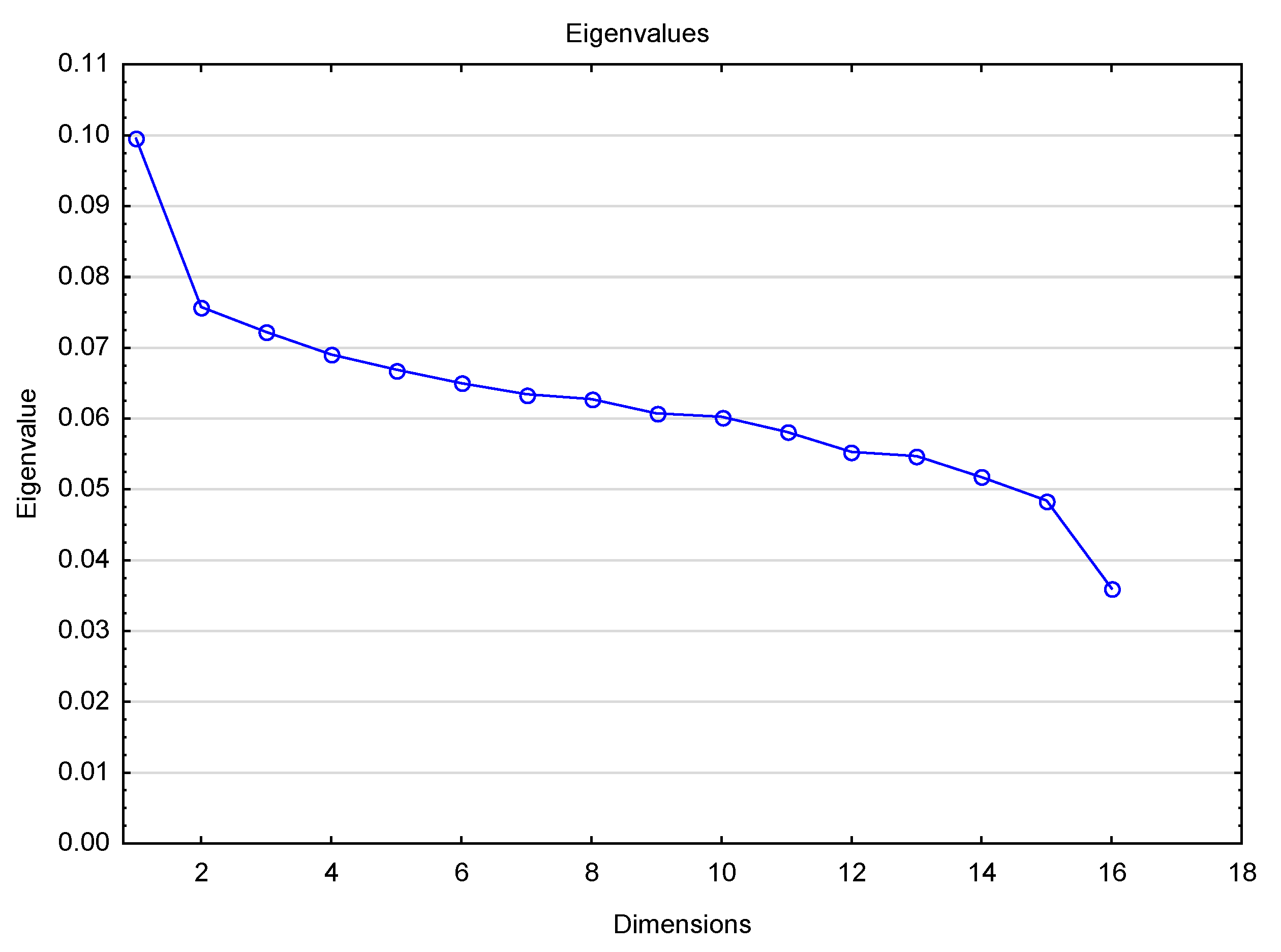
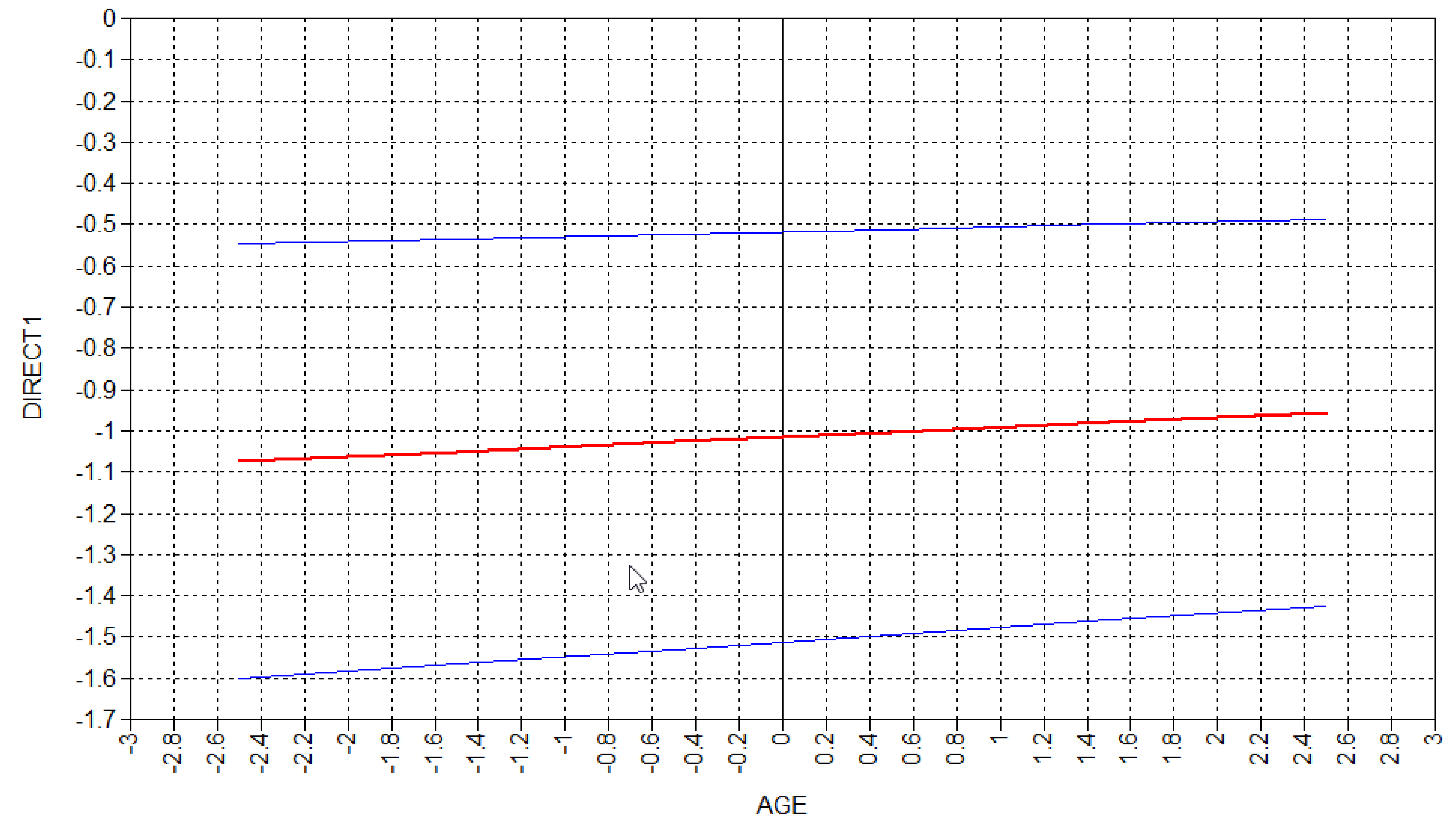
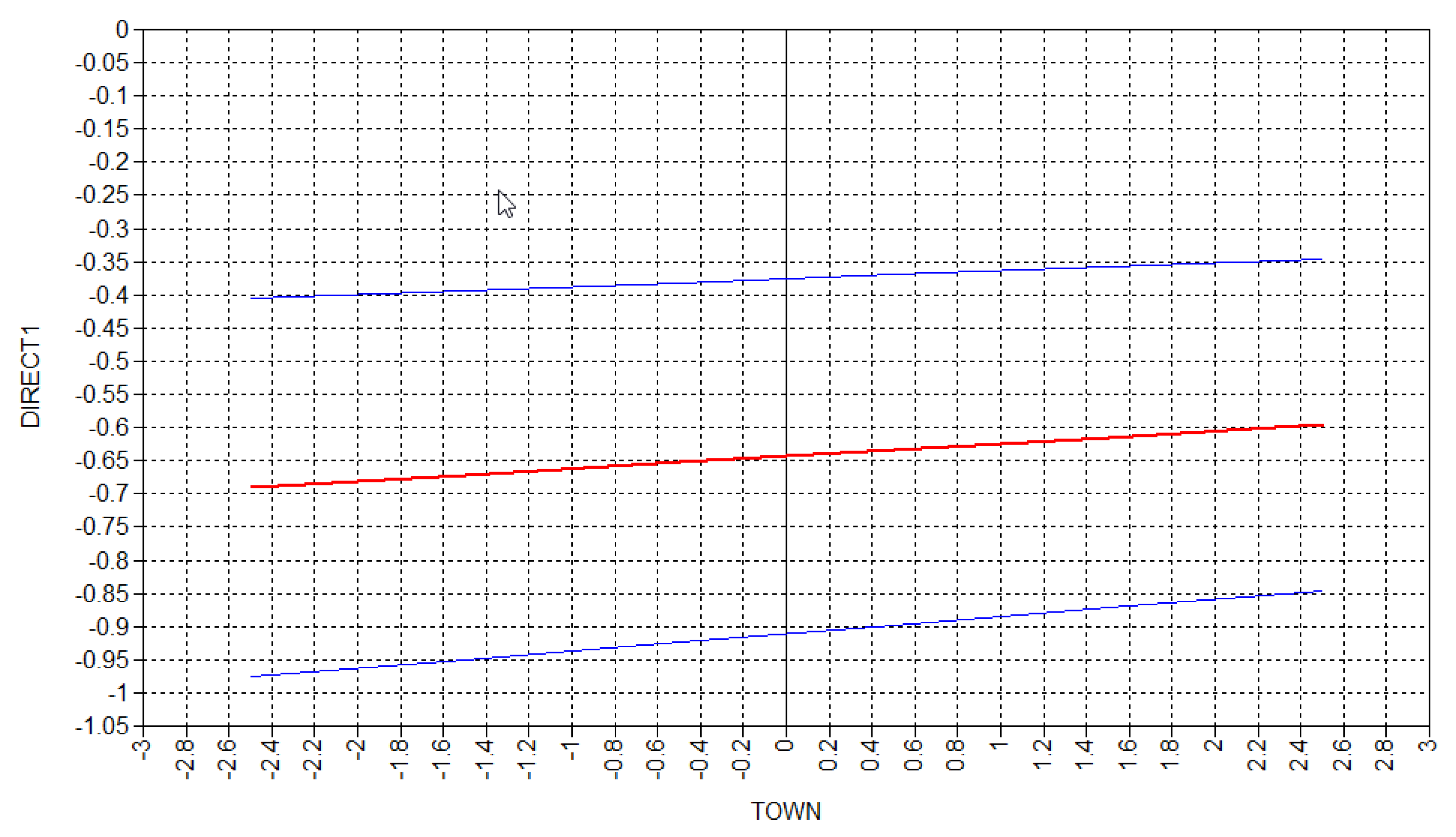
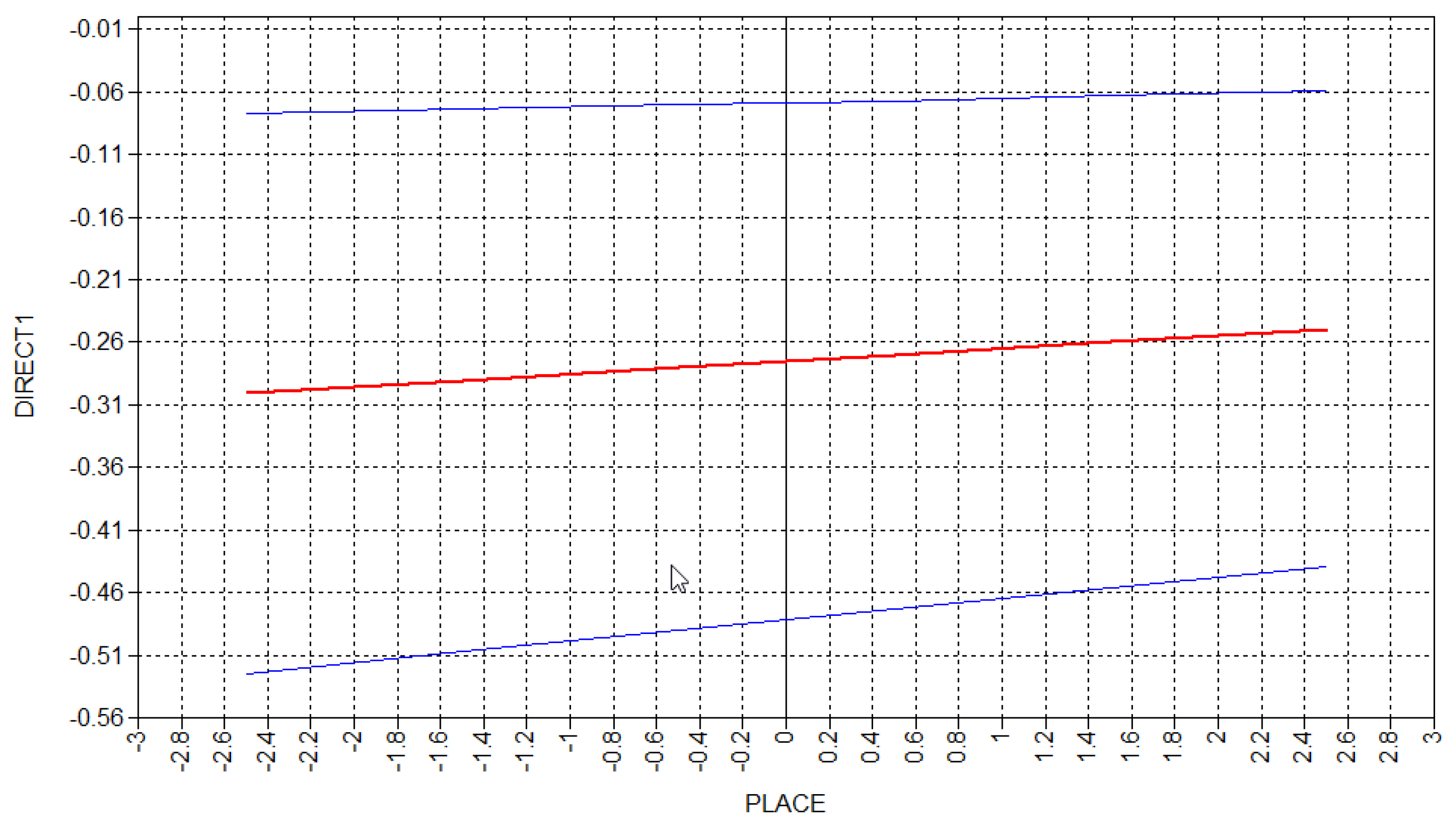
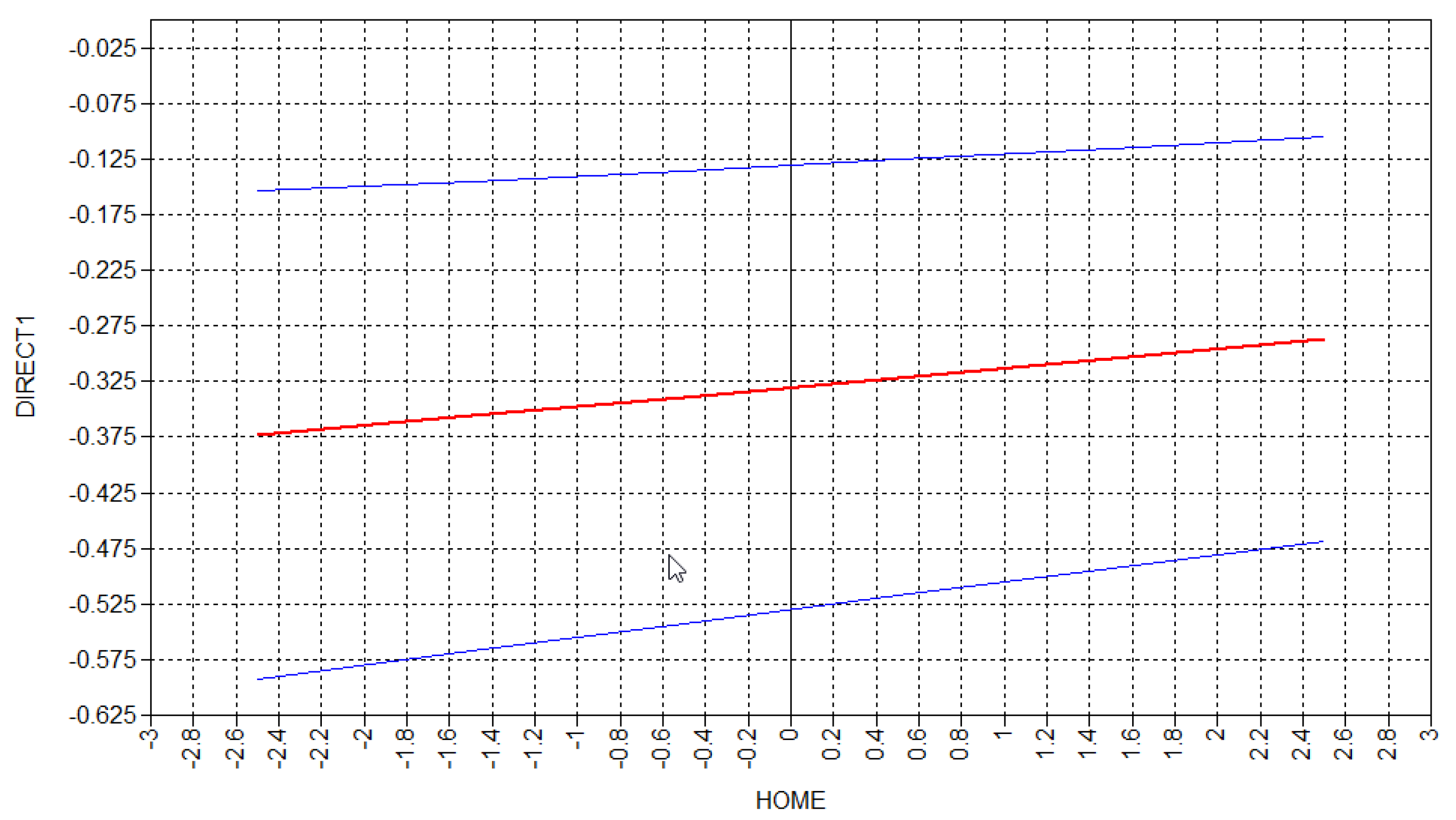
| Description of Odor | Correlation with the Regret about a Possible Domicile Relocation | |||
|---|---|---|---|---|
| Correlation Coefficient* | p | Direction of Correlation | Strength of Correlation | |
| Chemical | 0.031 | p = 0.239 | --- | --- |
| Irritating | −0.023 | p = 0.384 | --- | --- |
| Suffocating | −0.037 | p = 0.157 | --- | --- |
| Smoke | 0 | p = 0.993 | --- | --- |
| Sharp | −0.032 | p = 0.225 | --- | --- |
| Sulfur | 0.03 | p = 0.25 | --- | --- |
| Sweet | 0.019 | p = 0.469 | --- | --- |
| Burnt | −0.05 | p = 0.06 | --- | --- |
| Exhaust | −0.014 | p = 0.59 | --- | --- |
| Septic tank | 0.062 | p = 0.018 | positive | very weak |
| Garbage | −0.009 | p = 0.737 | --- | --- |
| Rot | −0.067 | p = 0.012 | negative | very weak |
| Rotten eggs | 0.002 | p = 0.936 | --- | --- |
| Description of odor | Correlation with the Regret about a Possible Domicile Relocation | |||
|---|---|---|---|---|
| Correlation Coefficient* | p | Direction of Correlation | Strength of Correlation | |
| Chemical | −0.006 | p = 0.859 | --- | --- |
| Irritating | −0.039 | p = 0.288 | --- | --- |
| Suffocating | −0.039 | p = 0.281 | --- | --- |
| Smoke | −0.053 | p = 0.144 | --- | --- |
| Sharp | 0.023 | p = 0.522 | --- | --- |
| Sulfur | 0.016 | p = 0.669 | --- | --- |
| Sweet | 0.034 | p = 0.354 | --- | --- |
| Burnt | −0.149 | p < 0.001 | negative | very weak |
| Exhaust | −0.065 | p = 0.073 | --- | --- |
| Septic tank | 0.106 | p = 0.004 | positive | very weak |
| Garbage | 0.018 | p = 0.631 | --- | --- |
| Rot | −0.007 | p = 0.847 | --- | --- |
| Rotten eggs | 0.007 | p = 0.846 | --- | --- |
| Description of Odor | Correlation with the Regret about a Possible Domicile Relocation | |||
|---|---|---|---|---|
| Correlation Coefficient* | p | Direction of Correlation | Strength of Correlation | |
| Chemical | 0.067 | p = 0.078 | --- | --- |
| Irritating | −0.008 | p = 0.835 | --- | --- |
| Suffocating | −0.034 | p = 0.373 | --- | --- |
| Smoke | 0.049 | p = 0.199 | --- | --- |
| Sharp | −0.084 | p = 0.027 | negative | very weak |
| Sulfur | 0.065 | p = 0.089 | --- | --- |
| Sweet | 0.008 | p = 0.825 | --- | --- |
| Burnt | 0.032 | p = 0.404 | --- | --- |
| Exhaust | 0.034 | p = 0.38 | --- | --- |
| Septic tank | 0.022 | p = 0.557 | --- | --- |
| Garbage | −0.059 | p = 0.124 | --- | --- |
| Rot | −0.127 | p = 0.001 | negative | very weak |
| Rotten eggs | −0.003 | p = 0.93 | --- | --- |
| Description of odor | Correlation with the Regret about a Possible Domicile Relocation | |||
|---|---|---|---|---|
| Correlation Coefficient* | p | Direction of Correlation | Strength of Correlation | |
| Chemical | 0.065 | p = 0.059 | --- | --- |
| Irritating | 0.017 | p = 0.62 | --- | --- |
| Suffocating | −0.042 | p = 0.226 | --- | --- |
| Smoke | −0.002 | p = 0.962 | --- | --- |
| Sharp | −0.011 | p = 0.739 | --- | --- |
| Sulfur | 0.075 | p = 0.028 | positive | very weak |
| Sweet | 0.015 | p = 0.665 | --- | --- |
| Burnt | −0.091 | p = 0.008 | negative | very weak |
| Exhaust | −0.03 | p = 0.376 | --- | --- |
| Septic tank | 0.052 | p = 0.132 | --- | --- |
| Garbage | −0.015 | p = 0.671 | --- | --- |
| Rot | −0.054 | p = 0.118 | --- | --- |
| Rotten eggs | 0.004 | p = 0.918 | --- | --- |
| Description of odor | Correlation with the Regret about a Possible Domicile Relocation | |||
|---|---|---|---|---|
| Correlation Coefficient* | p | Direction of Correlation | Strength of Correlation | |
| Chemical | −0.019 | p = 0.64 | --- | --- |
| Irritating | −0.086 | p = 0.037 | negative | very weak |
| Suffocating | −0.038 | p = 0.361 | --- | --- |
| Smoke | 0.01 | p = 0.811 | --- | --- |
| Sharp | −0.061 | p = 0.139 | --- | --- |
| Sulfur | −0.068 | p = 0.097 | --- | --- |
| Sweet | 0.024 | p = 0.568 | --- | --- |
| Burnt | 0.023 | p = 0.583 | --- | --- |
| Exhaust | 0.011 | p = 0.79 | --- | --- |
| Septic tank | 0.082 | p = 0.048 | positive | very weak |
| Garbage | 0.004 | p = 0.914 | --- | --- |
| Rot | −0.085 | p = 0.041 | negative | very weak |
| Rotten eggs | 0.012 | p = 0.78 | --- | --- |
| Description of odor | Correlation with the Regret about a Possible Domicile Relocation | |||
|---|---|---|---|---|
| Correlation Coefficient* | p | Direction of Correlation | Strength of Correlation | |
| Chemical | 0.019 | p = 0.599 | --- | --- |
| Irritating | −0.02 | p = 0.583 | --- | --- |
| Suffocating | −0.028 | p = 0.455 | --- | --- |
| Smoke | −0.046 | p = 0.208 | --- | --- |
| Sharp | −0.054 | p = 0.145 | --- | --- |
| Sulfur | 0.002 | p = 0.953 | --- | --- |
| Sweet | 0.033 | p = 0.372 | --- | --- |
| Burnt | −0.159 | p < 0.001 | negative | very weak |
| Exhaust | 0.005 | p = 0.891 | --- | --- |
| Septic tank | 0.098 | p = 0.008 | positive | very weak |
| Garbage | 0.032 | p = 0.382 | --- | --- |
| Rot | −0.009 | p = 0.8 | --- | --- |
| Rotten eggs | −0.028 | p = 0.455 | --- | --- |
| Odor Description | Correlation with the Regret about a Possible Domicile Relocation | |||
|---|---|---|---|---|
| Correlation Coefficient* | p | Direction of Correlation | Strength of Correlation | |
| Chemical | 0.039 | p = 0.311 | --- | --- |
| Irritating | −0.021 | p = 0.576 | --- | --- |
| Suffocating | −0.048 | p = 0.212 | --- | --- |
| Smoke | 0.028 | p = 0.471 | --- | --- |
| Sharp | −0.02 | p = 0.603 | --- | --- |
| Sulfur | 0.079 | p = 0.039 | positive | very weak |
| Sweet | 0.002 | p = 0.967 | --- | --- |
| Burning | 0.034 | p = 0.378 | --- | --- |
| Exhaust | −0.047 | p = 0.217 | --- | --- |
| Septic tank | 0.029 | p = 0.443 | --- | --- |
| Garbage | −0.058 | p = 0.131 | --- | --- |
| Rot | −0.124 | p = 0.001 | negative | very weak |
| Rotten eggs | 0.045 | p = 0.24 | --- | --- |
| Odor Description | Correlation with the Regret about a Possible Domicile Relocation | |||
|---|---|---|---|---|
| Correlation Coefficient* | p | Direction of Correlation | Strength of Correlation | |
| Chemical | 0.031 | p = 0.402 | --- | --- |
| Irritating | −0.079 | p = 0.031 | negative | very weak |
| Suffocating | −0.07 | p = 0.055 | --- | --- |
| Smoke | 0.021 | p = 0.568 | --- | --- |
| Sharp | −0.038 | p = 0.294 | --- | --- |
| Sulfur | −0.017 | p = 0.633 | --- | --- |
| Sweet | 0.044 | p = 0.225 | --- | --- |
| Burnt | −0.115 | p = 0.002 | negative | very weak |
| Exhaust | 0.012 | p = 0.743 | --- | --- |
| Septic tank | 0.114 | p = 0.002 | positive | very weak |
| Garbage | −0.007 | p = 0.846 | --- | --- |
| Rot | −0.049 | p = 0.178 | --- | --- |
| Rotten eggs | −0.025 | p = 0.485 | --- | --- |
| Description of odor | Correlation with the Regret about a Possible Domicile Relocation | |||
|---|---|---|---|---|
| Correlation Coefficient* | p | Direction of Correlation | Strength Correlation | |
| Chemical | 0.021 | p = 0.603 | --- | --- |
| Irritating | 0.039 | p = 0.321 | --- | --- |
| Suffocating | −0.009 | p = 0.814 | --- | --- |
| Smoke | −0.028 | p = 0.475 | --- | --- |
| Sharp | −0.014 | p = 0.716 | --- | --- |
| Sulfur | 0.091 | p = 0.022 | positive | very weak |
| Sweet | −0.014 | p = 0.731 | --- | --- |
| Burnt | −0.012 | p = 0.757 | --- | --- |
| Exhaust | −0.051 | p = 0.203 | --- | --- |
| Septic tank | 0.041 | p = 0.307 | --- | --- |
| Garbage | 0.008 | p = 0.841 | --- | --- |
| Rot | −0.065 | p = 0.103 | --- | --- |
| Rotten eggs | 0.041 | p = 0.304 | --- | --- |
| Fragrances | Inertia Dimension1 | Cos2 Dimension1 | Inertia Dimension2 | Cos2 Dimension2 | Inertia Dimension3 | Cos2 Dimension3 |
|---|---|---|---|---|---|---|
| Chemical | 0.014324 | 0.075608 | 0.107465 | 0.026238 | 0.035559 | 0.007671 |
| Irritating | 0.003576 | 0.007104 | 0.093865 | 0.141931 | 0.033290 | 0.047996 |
| Suffocating | 0.000546 | 0.000877 | 0.006078 | 0.007424 | 0.129469 | 0.150780 |
| Smoke | 0.011870 | 0.019343 | 0.075914 | 0.094160 | 0.244721 | 0.289424 |
| Nauseating | 0.009070 | 0.014509 | 0.002737 | 0.003332 | 0.004947 | 0.005743 |
| Sharp | 0.000377 | 0.000648 | 0.020880 | 0.027311 | 0.040736 | 0.050804 |
| Carrion | 0.003723 | 0.005945 | 0.272348 | 0.330960 | 0.009593 | 0.011116 |
| Palk | 0.003858 | 0.006156 | 0.000816 | 0.000991 | 0.002596 | 0.003006 |
| Sulfur | 0.002936 | 0.004705 | 0.011926 | 0.014547 | 0.017715 | 0.020605 |
| Sweet | 0.000182 | 0.000303 | 0.002999 | 0.003804 | 0.069472 | 0.084009 |
| Burning | 0.193384 | 0.420641 | 0.000739 | 0.001224 | 0.016623 | 0.026241 |
| Sams | 0.199981 | 0.381934 | 0.000452 | 0.000657 | 0.050861 | 0.070495 |
| Septic tank | 0.092586 | 0.415320 | 0.005281 | 0.018032 | 0.001133 0.003689 | |
| Garbage | 0.018859 | 0.030733 | 0.326387 | 0.404834 | 0.005246 | 0.006204 |
| Rot | 0.116180 | 0.268953 | 0.000214 | 0.000377 | 0.032383 | 0.054406 |
| Eggs | 0.000655 | 0.001057 | 0.044819 | 0.055092 | 0.252288 | 0.295697 |
| Parameters | Estimate | S.E. | Est/S.E. | p-Value |
|---|---|---|---|---|
| Females | ||||
| Regret on Burning | −0.191 | 0.095 | −2.013 | 0.044 * |
| Regret on Irritating | 0.068 | 0.100 | 0.679 | 0.497 |
| Regret on Smoke | 0.231 | 0.111 | 2.081 | 0.037 * |
| Residual Regret | 0.991 | 0.046 | 31.579 | 0.000 * |
| Males | ||||
| Regret on Burning | 0.110 | 0.587 | 0.557 | 0.065 |
| Regret on Irritating | −0.227 | 0.156 | −1.452 | 0.147 |
| Regret on Smoke | −0.170 | 0.130 | −1.308 | 0.191 |
| Residual Regret | 0.997 | 0.035 | 28.133 | 0.000 * |
| Parameters | Estimate | S.E. | Est/S.E. | p-Value |
|---|---|---|---|---|
| Regret on Age | 0.001 | 0.002 | 0.270 | 0.787 |
| Regret on Burning | −1.015 | 0.254 | −3.999 | 0.000 * |
| Regret on Irritating | 0.258 | 0.338 | 0.764 | 0.445 |
| Regret on Smoke | −0.092 | 0.275 | −0.335 | 0.738 |
| Regret on Burning x Age | 0.023 | 0.006 | 3.761 | 0.000 * |
| Regret on Irritating x Age | −0.007 | 0.009 | −0.825 | 0.409 |
| Regret on Smoke x Age | 0.005 | 0.007 | 0.637 | 0.524 |
| Residual Regret | 0.998 | 0.035 | 28.136 | 0.000 * |
| Parameters | Estimate | S.E. | Est/S.E. | p-Value |
|---|---|---|---|---|
| Regret on Town | 0.004 | 0.001 | 2.677 | 0.007 * |
| Regret on Burning | −0.643 | 0.136 | −4.714 | 0.000* |
| Regret on Irritating | 0.155 | 0.160 | 0.970 | 0.332 |
| Regret on Smoke | −0.132 | 0.156 | −0.844 | 0.399 |
| Regret on Burning x Town | 0.019 | 0.004 | 4.554 | 0.000 * |
| Regret on Irritating x Town | −0.007 | 0.005 | −1.265 | 0.206 |
| Regret on Smoke x Town | 0.007 | 0.005 | 1.525 | 0.127 |
| Residual Regret | 0.978 | 0.035 | 28.134 | 0.000 * |
| Parameters | Estimate | S.E. | Est/S.E. | p-Value |
|---|---|---|---|---|
| Regret on Place | 0.005 | 0.002 | 3.083 | 0.002 * |
| Regret on Burning | −0.275 | 0.105 | −2.614 | 0.009 * |
| Regret on Irritating | 0.047 | 0.124 | 0.378 | 0.706 |
| Regret on Smoke | 0.121 | 0.155 | 0.877 | 0.019 |
| Regret on Burning x Place | 0.010 | 0.005 | 2.154 | 0.031 * |
| Regret on Irritating x Place | −0.005 | 0.007 | −0.788 | 0.431 |
| Regret on Smoke x Place | 0.004 | 0.006 | 0.719 | 0.472 |
| Residual Regret | 0.989 | 0.035 | 28.133 | 0.000 * |
| Parameters | Estimate | S.E. | Est/S.E. | p-Value |
|---|---|---|---|---|
| Regret on Home | 0.002 | 0.002 | 1.139 | 0.255 |
| Regret on Burning | −0.330 | 0.102 | −3.243 | 0.001 * |
| Regret on Irritating | −0.029 | 0.120 | −0.237 | 0.812 |
| Regret on Smoke | 0.092 | 0.117 | 0.791 | 0.429 |
| Regret on Burning x Home | 0.017 | 0.006 | 3.134 | 0.002 * |
| Regret on Irritating x Home | 0.001 | 0.009 | 0.129 | 0.897 |
| Regret on Smoke x Home | −0.001 | 0.007 | −0.131 | 0.896 |
| Residual Regret | 0.991 | 0.035 | 28.133 | 0.000 * |
© 2020 by the authors. Licensee MDPI, Basel, Switzerland. This article is an open access article distributed under the terms and conditions of the Creative Commons Attribution (CC BY) license (http://creativecommons.org/licenses/by/4.0/).
Share and Cite
Wojnarowska, M.; Sołtysik, M.; Sagan, A.; Stobiecka, J.; Plichta, J.; Plichta, G. Impact of Odor Nuisance on Preferred Place of Residence. Sustainability 2020, 12, 3181. https://doi.org/10.3390/su12083181
Wojnarowska M, Sołtysik M, Sagan A, Stobiecka J, Plichta J, Plichta G. Impact of Odor Nuisance on Preferred Place of Residence. Sustainability. 2020; 12(8):3181. https://doi.org/10.3390/su12083181
Chicago/Turabian StyleWojnarowska, Magdalena, Mariusz Sołtysik, Adam Sagan, Jadwiga Stobiecka, Jarosław Plichta, and Grażyna Plichta. 2020. "Impact of Odor Nuisance on Preferred Place of Residence" Sustainability 12, no. 8: 3181. https://doi.org/10.3390/su12083181
APA StyleWojnarowska, M., Sołtysik, M., Sagan, A., Stobiecka, J., Plichta, J., & Plichta, G. (2020). Impact of Odor Nuisance on Preferred Place of Residence. Sustainability, 12(8), 3181. https://doi.org/10.3390/su12083181





